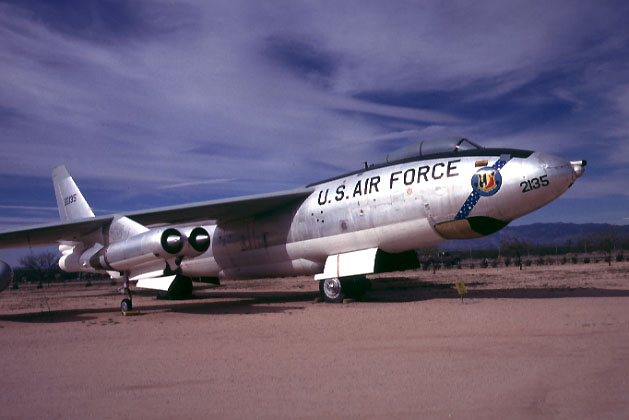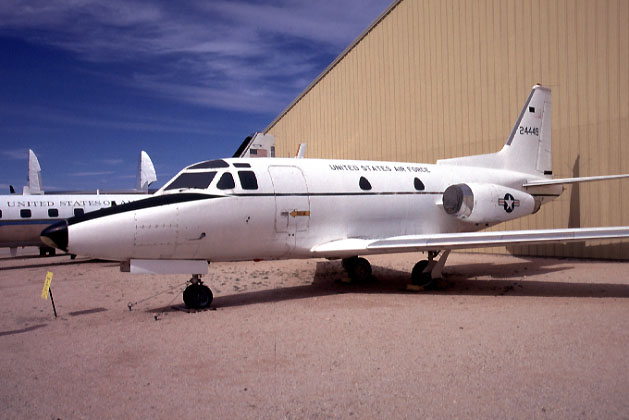A pilot's personal history ...
It was during the Great Depression that I (age 5) first climbed in an airplane at Wertz Field (one of Lucky Lindy's stops), Institute (WV). Later, I played in the old hangar of Howard Mays' in the loop of the Coal River at Lower Falls, that abandoned (first WV) airfield put to use again in the '40s by my father. Because of the bend in the middle of the 1800' grass strip, it was called "Rainbow Field," from which we operated an early Bonanza (NC3097V). However, my first flying "lessons" were at Kanawha Flying School, from a barge based on the river at the Charleston levee, before it was moved across under the South Side bridge to the C&O station side. I had a "deal" with my dad--for every piano lesson I endured, I would get 1/2-hour flight instruction. My first instructor was Jack Allen Crafton, but my real mentor was the mechanic who kept the seaplanes flying, Richard Blizzard. He taught me to land in Aeronca "Chiefs" (vintage '39, rebuilt many times--NC22418, NC22459, NC22485) by demonstrating the secret for bringing any aircraft to a gentle destination. I was 13 years old.
I went to school in St. Augustine after that first summer of flight, and continued my instruction with Flight Services, Inc, a partnership of two ex-Navy pilots, R. W. Peterson, and Don R. "Centerline" Hill. Many valuable lessons were learned from those veterans of the Pacific engagements, e.g., use all the runway, and fly up-sun from a planned point of intercept.
In 1946 my father bought-in a to a joint venture with Cramer Bollinger, a photographer who owned a parcel called "Bollinger Field," at one time the only airport serving the capital of West Virginia. Post-Florida soujourn, I was the "line boy." The Charleston Aviation Corporation was a distributor after WWII for Beechcraft, Stinson, and Aeronca, and did the GI Bill thing. Captain Yeager flew in there with his jointly owned (with Bob Hoover) BT13 to visit his mother. Kermit Paul Graham was the Chief Pilot. It was a glorious time!
I soloed (age 14) in an Aeronca Champion out of a cornfield along the bank of the Kanawha on the way to Pt. Pleasant, courtesy of a GI Bill student, Roy Newcomber. We also flew under every bridge possible. I had to wait until I was 16 to join AOPA (40560).
One of the founders of Civil Air Patrol, then Director of WV Aviation, was another mentor. ("Colonel" Hubert H. Stark was married to one of the original 99s.) It was his mother who passed the admonition--saved on a photo endorsement--to always fly "low and slow." Stark was an exemplary pilot of the pre-war era, "old school," of that ilk in the days of air racing, a contemporary of Roscoe Turner, et. al. Roscoe Turner was my seat-mate on the first scheduled American Airlines flight from Kanawha Airport (now Yeager) in 1948. I was the first to land on that unfinished surface, in NC425C, a Stinson "Flying Station Wagon," (Model 108, I think), to the distress of the runway contractor. Pilots in those days were still romantic figures.
There is no time in the history of civil aviation during which more people learned to fly, more aircraft were available at reasonable prices, and no futures were unimaginable than during the post-WWII era, before the Korean War. Surplus military trainers, even warbirds, and new models of old private aircraft were available. It was a golden age, and those who lived therein dipped into the plethora of opportunity. It was a time, my friends, to be a Birdman, and I was fortunate to be able to take advantage of opportunity to fly everything on the field. Now, the Web allows anyone to take advantage of flying opportunities.
 Here's a view of the aircraft in which I logged the most hours--1400 in a B-47. I'll pass over the Air Guard and Air Force duties, mostly endurance flights. Oh, there was a fire in flight over Lake McConaughy, and I almost crashed a C-5 on takeoff. But I did earn a FAI gliding certificate in England, and belonged to the Royal Aero Club (at RAF Cranwell), flying a Tiger Moth (G-ANEF) built before I was born. I served as a USAF Aero Club official at every base where I was stationed (if there was one), "checking out" jet jockeys who had never seen the inside of a propellor-driven machine (in T-34s). THAT was enlightening experience. While stationed at Offutt (HqSAC) as a Communications Officer, I volunteered for a 4440th (successor to WWII "Ferry Command") around-the-world boon-doggle, moving a T-39A Saberliner WESTBOUND, Tan Son Nhut to Langley AFB.
Here's a view of the aircraft in which I logged the most hours--1400 in a B-47. I'll pass over the Air Guard and Air Force duties, mostly endurance flights. Oh, there was a fire in flight over Lake McConaughy, and I almost crashed a C-5 on takeoff. But I did earn a FAI gliding certificate in England, and belonged to the Royal Aero Club (at RAF Cranwell), flying a Tiger Moth (G-ANEF) built before I was born. I served as a USAF Aero Club official at every base where I was stationed (if there was one), "checking out" jet jockeys who had never seen the inside of a propellor-driven machine (in T-34s). THAT was enlightening experience. While stationed at Offutt (HqSAC) as a Communications Officer, I volunteered for a 4440th (successor to WWII "Ferry Command") around-the-world boon-doggle, moving a T-39A Saberliner WESTBOUND, Tan Son Nhut to Langley AFB.

Post-military, I flew out of St. Thomas, down-island and local in 172s, tourists and photo-ops. Divorced, then I operated C-182/206 from Aiken (SC) for a couple of years, and spent 18 months on the construction of Dave Garber's DG-1 race plane at Opa-Locka (FL). During that period I met a lot of in/famous aviatiors. I had a "Jeannie's Teenie" (N73BM) that was an exciting piece of work, and belonged to EAA (85658). Married a second time to a former Eastern Shuttle flight attendant, and back in WV served as the CAP Director of Operations for several years. I made the first edition of Who's Who in American Aviation.
I started my son flying at the same age I began. He has outdone me with certificates, has owned his own flight school at Burke Lakefront in Cleveland, and now flies a Citationjet for a steel company. For my BFRs, I endure his tapping finger on an instrument ("You're ten feet off, Dad ...").
A few of the things that happened along the way are contained in a book in progress, Cloud Country (as Tom Curtis).
For some other "lines ... ."
[Go to Menu]
 Here's a view of the aircraft in which I logged the most hours--1400 in a B-47. I'll pass over the Air Guard and Air Force duties, mostly endurance flights. Oh, there was a fire in flight over Lake McConaughy, and I almost crashed a C-5 on takeoff. But I did earn a FAI gliding certificate in England, and belonged to the Royal Aero Club (at RAF Cranwell), flying a Tiger Moth (G-ANEF) built before I was born. I served as a USAF Aero Club official at every base where I was stationed (if there was one), "checking out" jet jockeys who had never seen the inside of a propellor-driven machine (in T-34s). THAT was enlightening experience. While stationed at Offutt (HqSAC) as a Communications Officer, I volunteered for a 4440th (successor to WWII "Ferry Command") around-the-world boon-doggle, moving a T-39A Saberliner WESTBOUND, Tan Son Nhut to Langley AFB.
Here's a view of the aircraft in which I logged the most hours--1400 in a B-47. I'll pass over the Air Guard and Air Force duties, mostly endurance flights. Oh, there was a fire in flight over Lake McConaughy, and I almost crashed a C-5 on takeoff. But I did earn a FAI gliding certificate in England, and belonged to the Royal Aero Club (at RAF Cranwell), flying a Tiger Moth (G-ANEF) built before I was born. I served as a USAF Aero Club official at every base where I was stationed (if there was one), "checking out" jet jockeys who had never seen the inside of a propellor-driven machine (in T-34s). THAT was enlightening experience. While stationed at Offutt (HqSAC) as a Communications Officer, I volunteered for a 4440th (successor to WWII "Ferry Command") around-the-world boon-doggle, moving a T-39A Saberliner WESTBOUND, Tan Son Nhut to Langley AFB. 